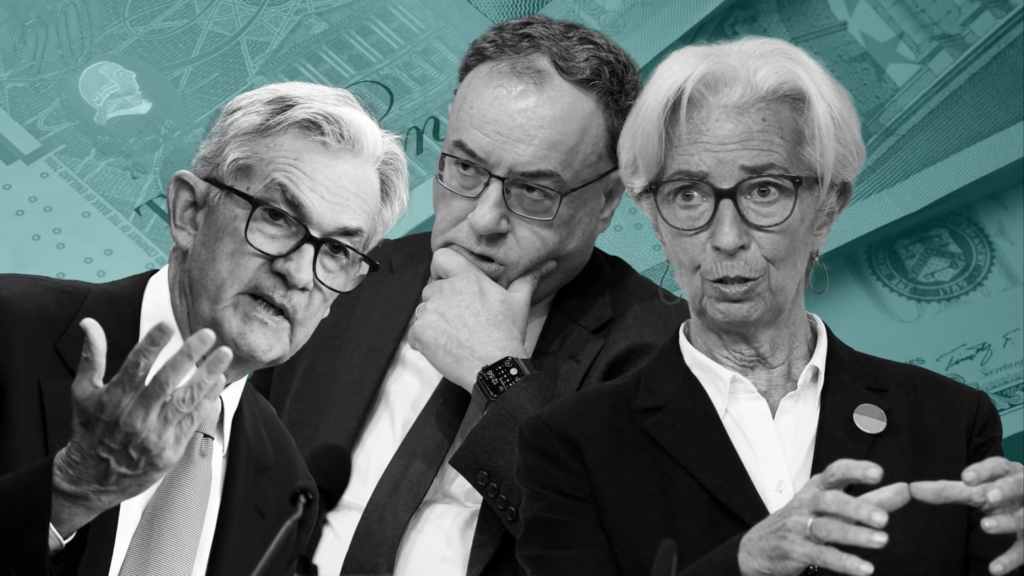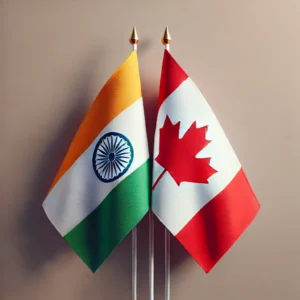Why Inflation Has Weakened Central Banks
The COVID-19 pandemic has been a major turning point for global economies, and its impacts have revealed the limitations of central banks in managing inflation. Prior to the pandemic, central banks such as the Federal Reserve (Fed), the European Central Bank (ECB), and the Bank of England were often viewed as powerful institutions, able to control inflation and steer economic growth. However, the post-pandemic world exposed vulnerabilities in these institutions, leading to growing challenges for monetary policy.
The Wizard Behind the Curtain
A famous scene from The Wizard of Oz shows Toto revealing that the “wizard” is just a man with a loudspeaker. Similarly, the pandemic pulled back the curtain on central banks. Before COVID-19, central banks were viewed as maestros—geniuses who could seemingly control the economy with their tools, particularly interest rates. But the pandemic’s global supply shocks and the inflationary pressures from government stimulus packages created an economic situation that central banks were slow to respond to.
Factories around the world shuttered, disrupting supply chains, while stimulus efforts injected money into economies, increasing demand and fueling inflation. Central banks, though aware of inflationary risks, found themselves without adequate tools to rein in inflation quickly enough.
Inflationary Battle: Success or Defeat?

The Fed, under Jerome Powell, has been credited with acting decisively once it recognized the inflationary spiral. By rapidly raising interest rates, the Fed managed to bring inflation closer to its target. However, even as inflation returns to around 2%, many analysts worry that central banks may be losing the bigger battle of managing inflation effectively in the future.
Raising interest rates helps by cooling demand—when borrowing becomes more expensive, consumers and businesses spend less, which can lower inflation. But inflationary pressures today come increasingly from the supply side, something interest rate policies can’t address directly.
New Risks in a Changing World

Today’s inflation isn’t just about demand or supply shocks from pandemics. It’s also driven by geopolitical tensions and climate change. For decades, global trade—especially China’s entry into the world economy—was a source of disinflation, helping to keep prices stable. However, as trade relations between the U.S. and China deteriorate, globalization is slowing, or even reversing. This deglobalization, coupled with geopolitical conflicts like the Russia-Ukraine war, has exacerbated supply chain disruptions, adding further inflationary pressures.
Climate change is another critical issue. Efforts to combat climate change, such as carbon taxes, could contribute to inflation. Rising energy prices, already a factor in post-pandemic inflation, are likely to remain a persistent issue as countries shift to cleaner energy sources.
The Future of Central Banking

Traditional monetary policy tools, such as interest rate adjustments, are becoming less effective in this new world of supply-driven inflation. Central banks are still capable of managing demand, but supply shocks are beyond their immediate reach. This has led to calls for new tools that go beyond the realm of central banks, involving fiscal policies such as taxation and government spending to stabilize prices.
Central banks, especially the Fed, face mounting political challenges. In the U.S., there are concerns about how the Fed will operate under future political pressures, particularly if former President Donald Trump is re-elected. The Fed’s independence and ability to focus on long-term price stability could be compromised by electoral politics.
Conclusion
In the post-pandemic world, central banks are no longer seen as the sole players in managing inflation. Their role is critical, but their limitations are clear. New inflation risks, such as supply chain disruptions and climate change, require a broader approach, involving fiscal policies and global cooperation. While the Fed and other central banks are still central to economic policy, their ability to control inflation will likely depend on how well they adapt to the changing landscape of global economics.
This article captures the key themes of inflation’s impact on central banks from your document. Would you like to make any adjustments or expand on certain sections?
References:
This article is inspired by this YouTube video.
FAQ
- What is inflation?
Inflation is the general increase in prices of goods and services over time, reducing the purchasing power of money. - How do central banks manage inflation?
Central banks typically manage inflation by adjusting interest rates, influencing the cost of borrowing and spending. - What role did COVID-19 play in increasing inflation?
COVID-19 disrupted global supply chains and triggered government stimulus packages, both of which fueled inflation. - How did the pandemic expose weaknesses in central banks?
Central banks were slow to respond to post-pandemic inflation and lacked tools to control supply-side shocks effectively. - What is a supply shock?
A supply shock occurs when the supply of goods or services is suddenly reduced, causing prices to rise. - Why was the pandemic a ‘Wizard of Oz’ moment for central banks?
Like the Wizard in the story, the pandemic revealed central banks’ limitations, challenging their image as all-powerful. - How do central banks reduce inflation?
Central banks reduce inflation by raising interest rates, making borrowing more expensive and reducing demand. - What is the Federal Reserve?
The Federal Reserve (Fed) is the central banking system of the United States, responsible for managing monetary policy. - Who is Jerome Powell?
Jerome Powell is the current Chair of the Federal Reserve, guiding U.S. monetary policy. - Why is the 2% inflation target important?
The 2% target is viewed as a healthy rate of inflation, balancing price stability and economic growth. - What tools do central banks use to manage inflation?
Central banks primarily use interest rate adjustments and reserve requirements to influence inflation. - Why is inflation becoming harder to control?
New risks like supply chain disruptions, geopolitical tensions, and climate change make inflation less predictable. - What is fiscal policy?
Fiscal policy involves government spending and taxation, which can influence economic activity and inflation. - How does climate change affect inflation?
Climate change can raise costs by damaging infrastructure, reducing crop yields, and necessitating investments in green technologies. - What is deglobalization?
Deglobalization refers to the reversal of global economic integration, leading to higher prices due to reduced trade efficiencies. - Why is central bank independence important?
Independence allows central banks to focus on long-term economic stability without political pressure. - How does raising interest rates affect consumers?
Higher interest rates make loans and credit more expensive, reducing consumer spending and cooling inflation. - What is the ECB?
The European Central Bank (ECB) is responsible for managing the euro and overseeing monetary policy for Eurozone countries. - What are supply-side shocks?
Supply-side shocks occur when external factors like wars or natural disasters disrupt the supply of goods and services. - Why did central banks struggle to control post-pandemic inflation?
They were slow to react to inflationary pressures, especially supply-side issues that interest rate changes couldn’t address. - What happens if central banks raise interest rates too quickly?
Raising rates too fast can trigger a recession by reducing demand too much and causing job losses. - What is a recession?
A recession is a significant decline in economic activity, typically marked by reduced GDP, employment, and consumer spending. - How did geopolitical tensions contribute to inflation?
Conflicts like the Russia-Ukraine war disrupted energy supplies, leading to higher prices for fuel and related goods. - How do carbon taxes impact inflation?
Carbon taxes raise the cost of energy production, contributing to higher overall prices as businesses pass the costs onto consumers. - Can central banks control supply-side inflation?
Central banks have limited control over supply-side inflation, which is often driven by external factors like trade disruptions or natural disasters. - What is monetary policy?
Monetary policy refers to the actions central banks take to influence the economy, primarily through interest rates and the money supply. - What is the Federal Funds Rate?
It is the interest rate at which banks lend to each other overnight, influenced by the Federal Reserve to control inflation and economic growth. - How do central banks influence unemployment?
By lowering interest rates, central banks can encourage borrowing and investment, boosting job creation. - What is the impact of higher energy prices on inflation?
Higher energy prices increase the cost of production and transportation, leading to widespread price hikes across industries. - How do trade wars affect inflation?
Trade wars reduce the availability of imported goods, raising prices due to supply shortages and higher tariffs. - Why is inflation a concern for central banks?
Uncontrolled inflation erodes consumer purchasing power and can lead to economic instability. - How does borrowing become more expensive with higher interest rates?
Lenders charge higher rates for loans, making mortgages, credit cards, and business loans more costly. - What role does fiscal policy play in controlling inflation?
Governments can influence inflation through taxation, spending, and regulation to affect demand and production. - Why is inflation bad for consumers?
Inflation reduces the value of money, making everyday goods and services more expensive. - What is quantitative easing?
Quantitative easing is a monetary policy where central banks buy government securities to increase the money supply and encourage lending. - How does central bank policy affect small businesses?
When interest rates rise, it becomes more expensive for small businesses to borrow and invest, slowing growth. - Can fiscal policies replace central bank tools?
Fiscal policies can complement central bank tools, but they typically focus more on long-term structural changes than immediate economic adjustments. - What are the inflationary risks from geopolitical conflicts?
Wars disrupt energy and commodity supplies, raising production costs and fueling inflation globally. - How can central banks ensure price stability?
By carefully managing interest rates and credit flows, central banks aim to maintain a balance between inflation and economic growth. - How does inflation affect employment?
High inflation can lead to layoffs as businesses face rising costs, but central banks try to avoid this by controlling inflation gradually. - Why did China’s entry into global trade lower inflation?
China’s low-cost manufacturing reduced production costs for many industries, keeping global prices lower. - How does rising debt affect inflation?
Increased debt can lead to higher government spending, which may increase demand and drive up prices. - Why is controlling inflation critical for economic stability?
Stable inflation allows businesses and consumers to plan for the future without fearing sudden price changes, promoting sustainable growth. - What could happen if central banks lose their independence?
Political interference might lead to poor monetary decisions that prioritize short-term gains over long-term stability, increasing inflation risks. - What are the long-term consequences of the Fed’s post-pandemic policies?
While the Fed successfully curbed inflation in the short term, ongoing geopolitical and supply chain risks could create future challenges for price stability.



